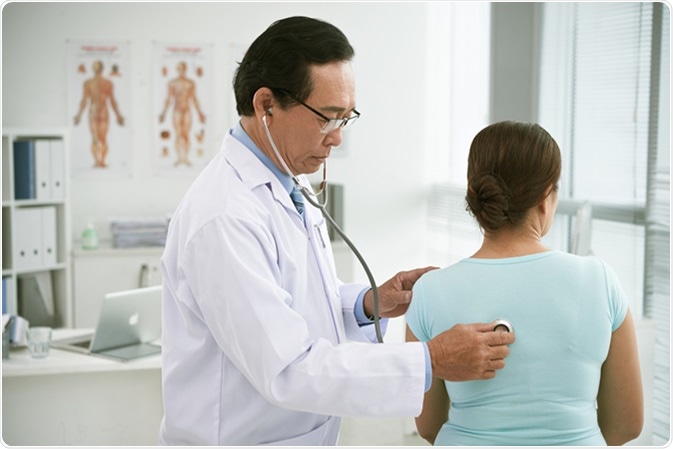Launching 1st March 2023. Also check out: https://www.thailandmedical.news/
Walking pneumonia is a respiratory infection which affects the lungs. It is a milder infection than pneumonia and is also known as community acquired pneumonia, atypical pneumonia, and mycoplasma pneumonia. It is a contagious disease which requires long term contact with the infected person for transmission of the illness.

The inflammation of the lung tissue in pneumonia can have a bacterial or viral cause of origin. In the case of Walking Pneumonia, the cause is the mycoplasma pneumoniaebacterium. The symptoms of this form of pneumonia are marginally different from the symptoms of pneumonia caused by other bacteria or by viruses.
While Walking Pneumonia makes the person feel tired and low on energy, it does not cause very severe symptoms. The person is able to carry on basic tasks without much difficulty. Mycoplasma pneumoniae may also cause other upper respiratory infections such as bronchitis. Those may result in more severe symptoms and will require medical treatment.
Symptoms tend to appear two to three weeks after exposure to the bacteria. It is diagnosed by a chest x-ray recommended on the basis of typical symptoms. The health care provider will also ask for general health history while making the diagnosis. Extra blood tests may be required if the health care provider deems it necessary.
As it is caused by a bacterium, it is possible for the bacteria to spread through phlegm, sneeze droplets, and cough mucus. It is contagious and will easily spread between people who have regular contact. This means places where a number of people are found together for extended periods of time become areas of possible transmission.
For example, school classrooms, military barracks, college dormitories, young people’s hostels, crowded work places are rife with infection possibilities. Those below forty years of age are more susceptible to mycoplasma pneumoniae. This does not mean, however, that older people will not ever contract the disease.
The symptoms most commonly associated with walking pneumonia include a low grade fever, sense of fatigue, a mild headache and general feeling of uneasiness. The person may also develop a skin rash and start off with a dry cough. Some may develop an ear infection, or may have to deal with inflamed sinuses and a sore throat.
Other symptoms may include shivering and body chills, a shortness of breath while climbing stairs, pain in the chest region when breathing deeply, and a loss of appetite. Muscles may ache, and joints may be stiff. In rare cases the patient may even suffer from loose motions. The symptoms will differ from person to person. Also symptoms are typically much milder than in regular pneumonia.
Walking Pneumonia is easily treated with antibiotics. Commonly prescribed antibiotics include azithromycin, clarithromycin, erythromycin, fluoroquinolones and tetracyclines. The fever can be controlled using medicines such as ibuprofen and naproxen. Most people will self-medicate even without knowing that they have Walking Pneumonia to control the fever.
Since cough medicines suppress the sputum, avoid having them without prescription. Ensure lots of fluid is drunk as it helps to free up the phlegm. Allow the body to rest as much as possible and don’t try to finish household chores when you are feeling down and out of energy. The idea is to get as much rest as possible in order to recover quickly.
In many cases, patients of Walking Pneumonia may not be medically treated. As the symptoms are not too severe, the patient usually just suffers through them until cured; however, if the condition is diagnosed and medicines are prescribed the recovery will be much faster. So if that cold and cough lasts longer than ten days it is a good idea to get it checked out.
As with most communicable diseases, it is best to isolate the patient as much as possible in order to avoid the spread of the disease. Unlike most illnesses, in the case of Walking Pneumonia, the patient is usually unaware that they are infected with a serious illness.
If any symptoms are present, however, it is a good idea to wash hands often, and have other people around do the same. The patient should also avoid smoking and stay away from crowds. Ideally, people with weak immune systems should get the flu shot annually to avoid falling ill.
Those who have suffered from the infection once, will develop a level of immunity to the mycoplasma, however this will not last a lifetime. The exact duration of immunity is not known and can differ from person to person based on the state of their immune system. Secondary infections have been observed in people with weaker immune systems. They can often prove more dangerous than Walking Pneumonia.
Reviewed by Afsaneh Khetrapal BSc (Hons)